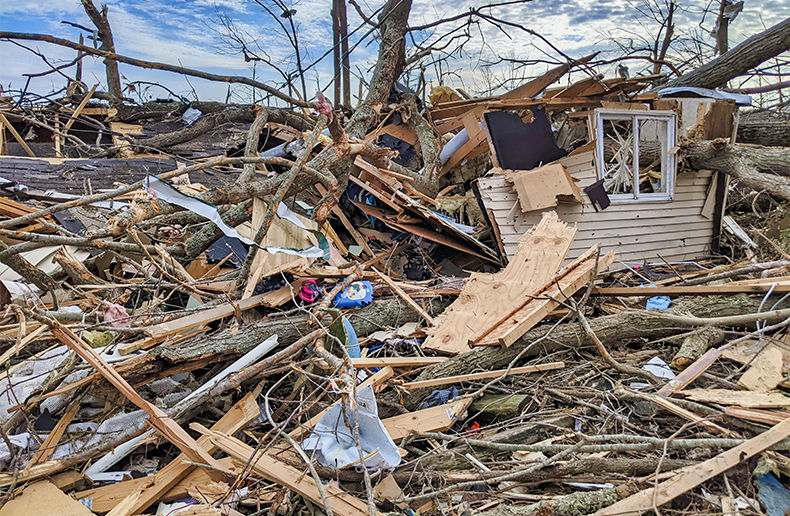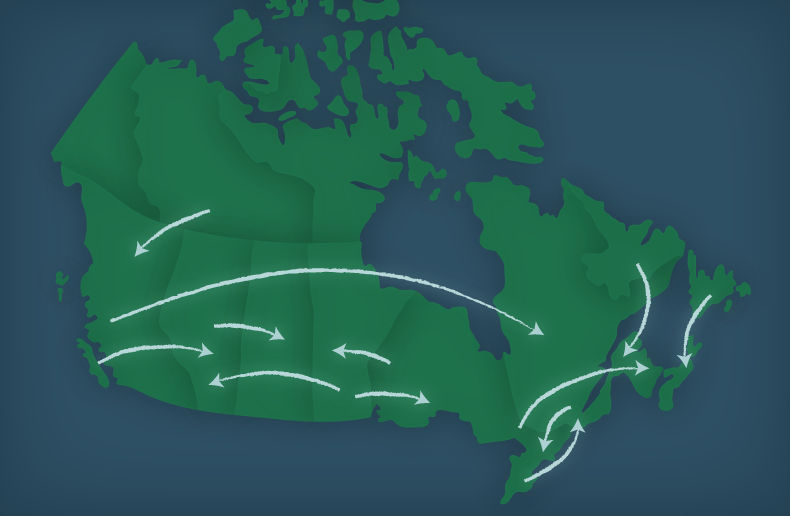Totaling at least 660 million dollars, the first estimates of insured damages caused by Hurricane Fiona in Eastern Canada already classify this event in the top ten worst losses in terms of insured damages.
The estimate is made by Catastrophe Indices and Quantification Inc. (CatIQ), which uses data from insurers. The Insurance Bureau of Canada released the estimate on October 19.
Hurricane Fiona ranks tenth in the list of the costliest insured losses, topping the 2011 forest fires that razed Slave Lake, Alberta. Eight of these losses have occurred since 2013.
This is the second disaster in 2022 to make it into the top ten, following the May 21 derecho (see table below).
Hurricane Fiona hit the Maritimes and the Gulf of St. Lawrence on Sept. 24. In addition to loss of a human life, the remnants of the hurricane which had hit Florida and North and South Carolina earlier, brought high winds, heavy rains, coastal overflows and storm surges, downed trees and caused power outages in the four Maritime provinces and the Magdalen Islands.
Urgent need for action
The IBC says that while the insured damages are historic for Atlantic Canada, most of the affected properties are located in high-risk flood zones where flood insurance is not available. As a result, most of the cost of the damage will be borne by the various levels of government.
“As we begin to see the extent of damages caused by Hurricane Fiona, it is clear that much more needs to be done to enhance our resilience to extreme weather events and build a culture of preparedness moving forward,” says Amanda Dean, IBC's vice-president for the Atlantic region.
“Climate change is real, and the fatalities, emotional turmoil and financial consequences we've witnessed must be a call to action – we must prioritize the protection of all Canadians from the impacts of climate change,” she adds.
Provincial breakdown
The distribution of insured damages was estimated as follows:
- Nova Scotia: over $385 million. In Halifax, many vehicles and buildings were damaged by trees downed by the storm. In Cape Breton Island and Pictou County, the storm caused numerous roof failures and storm surges, in addition to flooding and washed out roads;
- Prince Edward Island: over $220 million. Homes were moved off their foundations by the storm surges and others lost their roofs. Approximately 82,000 utilities customers were without power on Sept. 25, representing 95% of the Island's consumers. On the north coast, the beaches suffered significant erosion;
- New Brunswick: over $30 million. As the hurricane passed further east, the province was largely spared, except for power outages in the largest cities (Saint John, Moncton, Fredericton) and the entire Acadian Peninsula. The remaining building damage occurred along the Northumberland Strait and near the Nova Scotia border;
- Quebec: over $11 million. In the Magdalen Islands, located in the Gulf north of Prince Edward Island, the unusually high storm surge flooded many properties and businesses. The same phenomenon was observed in some communities in the Gaspé Peninsula, in addition to shoreline erosion;
- Newfoundland and Labrador: over $7 million. The southwestern part of the island portion of the province, from Burgeo to Port-aux-Basques, was particularly hard hit. At least 20 homes were washed away into the ocean, primarily in Port aux Basques, and one person was killed. Close to 200 people were evacuated on Sept. 24.







